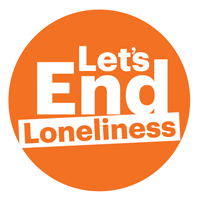In Our Community
10 things that we can do in our whānau and communities
There are lots of things that affect social connection within communities, and barriers and solutions will vary from one community to another.
Bringing people and organisations together can create positive change, and lead to more people feeling included and taking part in community activities.
Below are 10 ways that we can make a difference as members of our whanau and community, and 10 ways that community organisations can work to create positive change.
As community and whānau members
1. Get involved
Join the local residents’ association or turn up to local government consultations, and make our voices heard.
2. Reach out to whānau and local community
Think about who may be isolated in our own whanau or immediate neighbourhood, and look for opportunities to connect with, invite, and include them.
Step forward not back if friends or family are facing health or other challenges.
3. Say no to racism and other types of prejudice
Educate ourselves about racism, and other forms of prejudice. Take opportunities to connect with diverse people, and get to know them.
Learn how to challenge racism, ageism, and other types of prejudice.
4. Offer or create places for people to meet
Open up our homes to others, or volunteer for groups working to enhance community spaces in our area.
5. Organise social activities, or just join in
Invite a neighbour in for a cup of tea, have whanau and friends around for a meal or a barbeque, start a meetup, or be an active member of a community group or club.
6. Be connectors
Use our own networks to spread the word about community events, and use different channels to reach those who may be out of the loop.
Not everyone is on social media for example.
7. Offer transport
If a family member, friend, or member of a group we belong to doesn’t drive, be proactive about offering lifts. If someone stops coming to a group, check out whether transport is a barrier.
8. Make activities affordable
Be sensitive to the fact that peoples’ financial situations vary, and plan activities to minimize financial barriers to participation (e.g. make it clear that presents are not expected at a birthday gathering).
9. Support people dealing with housing issues
Find out which organisations in our area support people to get into safe, suitable accommodation, and donate or volunteer.
Be aware of the challenges for young people and others in our networks struggling with high rents, and scarce accommodation options, and do what we can to help (e.g. transport to move flat, or a temporary bed in gaps between one living situation and another).
Be welcoming to students and others in rental accommodation and help them feel part of their local neighbourhood.
10. Get to know our neighbours
Make an effort to get to know neighbours, either informally, or through organisations like Neighbourly, Neighbours Day Aotearoa, or Neighbourhood Support.
In a civil defence emergency or other crisis, neighbours are our closest source of support.
Community organisations, and government agencies can contribute in different ways to the 10 action points above.
Here are some further examples of what we can do:
Government agencies and community organisations
1. Use a community development approach
Consult community members and other organisations to map existing strengths and assets, and develop collaborative, low-cost solutions.
2. Work across agencies
Collaborate to find those most at risk of loneliness and connect them to the support they need.
Develop new referral/communication pathways as needed.
3. Say no to racism and other forms of discrimination
Integrate human rights into business practice, and employee professional development, and use communication channels to disseminate information that challenges racism and other forms of discrimination.
4. Share and develop meeting spaces
Share existing underused meeting spaces with other groups and organisations needing venues for activities.
Develop public spaces (parks, pools, community centres etc.) based on feedback from community members.
5. Work with others to increase social connection options
Work collaboratively to create events and new group social activities that bring people together.
Base these on feedback from community consultation, and mobilise the energy and strengths of community members.
Review existing activities. Are they still working? Do they welcome and integrate new people? Could they be modified to increase social connection?
6. Share communication channels
Use each other’s networks to spread the word about what’s available.
7. Address transport barriers
Identify existing community transport resources (vehicles, volunteer drivers etc.).
Can they be used/shared to support people needing transport? If not, use collective advocacy to lobby for additional community transport.
8. Address barriers related to income
Where possible keep costs of activities to a minimum, to overcome financial barriers to participation.
9. Create or advocate for environments that support social connection
Embed social connection as a key consideration in policy and planning around housing and development of built environments.
10. Plan ahead to ensure that isolated people are supported during emergencies
Work across agencies to increase support for isolated individuals during civil defence emergencies.
Consult community members to identify safety concerns that are a barrier to social connection, and prioritise/advocate for action (e.g. night lighting, community policing etc.).
Examples:
Social prescribing in Somerset in the UK is an example of formal agencies and community members working together to improve wellbeing in their communities by linking people to community-level social connection and support.
Age Connect Nelson Tasman is an Age Concern initiative supported by the local council and DHB. It involves a social connector who links older people to community social activities and support, an online calendar of events so people know what’s on, development and support of a range social connection activities, and celebration of AgeConnect individual and business champions who go out of their way to promote connection and inclusion in their community.
